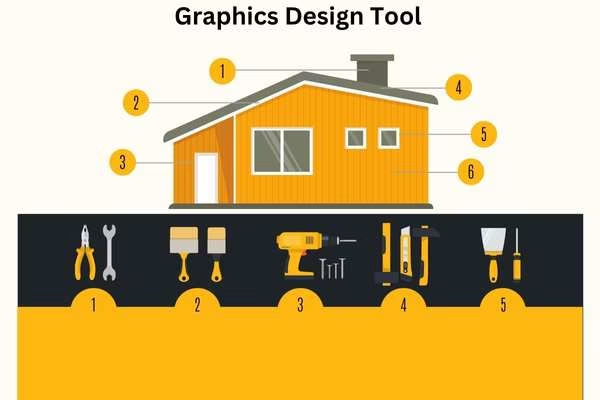Blender stands out as a potent, open-source tool in the field of 3D modeling, animation , and digital content creation that appeals to both experts and enthusiasts. Blender provides a full range of capabilities to help you realize your ideas, whether you’re a budding animator, game developer, or 3D artist. It’s crucial to realize how important it is to download and install Blender correctly, making sure your machine has the required space and technical skills, before you start the creative process. Everything you need to know about Blender’s features, advantages, disadvantages, and comparison to other 3D software will be covered in this guide, which will also cover how to download and install Blender on a PC.
Why Blender Matters
Blender is a whole ecosystem for creation, not just a 3D modeling program. Blender is a favorite among creators all around the world because of its versatility, which includes everything from sculpting and rendering to video editing and game production. To fully utilize its potential, though, you must make sure your computer satisfies the technical specifications and that you are familiar with the installation procedure.
Key Considerations Before Downloading and Installing
- System Space: Blender is lightweight compared to other 3D software, but you’ll still need sufficient storage for projects and add-ons.
- Technical Requirements: Check if your PC meets the minimum system requirements for smooth performance.
- Download and Installation: Follow the correct steps to download and install Blender to avoid compatibility issues.
- Support System: Blender’s active community and extensive documentation make it easy to find help and tutorials.
Blender: Features and Specifications
- Open-Source and Free: No cost barrier, making it accessible to everyone.
- Comprehensive Toolset: Includes modeling, sculpting, animation, rendering, and video editing tools.
- Cycles and Eevee Render Engines: High-quality rendering options for realistic and real-time results.
- Python Scripting: Customize and automate workflows with Python.
Top 2 Blender Alternatives: Reviews and Comparisons
While Blender is an excellent tool, it’s worth exploring other options to find the best fit for your needs. Here are two of the best alternatives:
-
Autodesk Maya
Features:
- Industry-standard software for 3D modeling, animation, and rendering.
- Advanced tools for character rigging, simulation, and effects.
- Integration with other Autodesk products like 3ds Max and AutoCAD.
Pros:
- Unmatched professional-grade features.
- Widely used in the film, gaming, and animation industries.
- Regular updates and robust customer support.
Cons:
- Expensive subscription model.
- Steeper learning curve compared to Blender.
- Requires a powerful system for optimal performance.
Review:
The industry standard for 3D modeling and animation is Autodesk Maya. It is a top option for pros due to its cutting-edge tools and industry recognition. Beginners may be put off by its high cost and intricacy, though.
-
Cinema 4D
Features:
- User-friendly interface, ideal for motion graphics and visual effects.
- Powerful tools for modeling, animation, and rendering.
- Seamless integration with Adobe After Effects.
Pros:
- Easy to learn, even for beginners.
- Excellent for motion graphics and visual effects.
- Strong community and extensive tutorials.
Cons:
- Expensive licensing options.
- Limited sculpting tools compared to Blender.
- Not as versatile for game development.
Review:
Professionals working in visual effects and motion graphics love Cinema 4D. It is an effective tool for producing eye-catching images because of its user-friendly design and smooth interaction with Adobe After Effects. It’s a great option for certain creative projects, even though it might not be as flexible as Blender.
Blender: Pros and Cons
Pros:
- Completely free and open-source.
- Versatile toolset for modeling, animation, rendering, and more.
- Active community and extensive documentation.
- Regular updates and improvements.
Cons:
- Steeper learning curve for beginners.
- Requires a powerful system for complex projects.
- Limited official customer support compared to paid software.
Conclusion
In terms of 3D modeling and animation , Blender is revolutionary. For producers of all skill levels, its open-source nature, extensive toolkit, and vibrant community make it an excellent option. Its cost-effectiveness and versatility make it a viable investment, even though it could have a longer learning curve than some alternatives.
Blender provides the tools and resources you need to realize your ideas, regardless of your level of experience and skill with 3D creation. Why wait, then? Unlock your creative potential by downloading and installing Blender right now.
Frequently Asked Questions (FAQs)
- Is Blender really free?
Yes, Blender is completely free and open-source. You can download and use it without any cost.
- What are the system requirements for Blender?
Blender runs on Windows, macOS, and Linux. For optimal performance, a multi-core processor, 8GB RAM, and a dedicated GPU are recommended.
- Can I use Blender for professional projects?
Absolutely. Blender is used by professionals worldwide for animation, visual effects, game development, and more.
- How do I install Blender on my PC?
Download the installer from the official Blender website, run the executable file, and follow the on-screen instructions.



